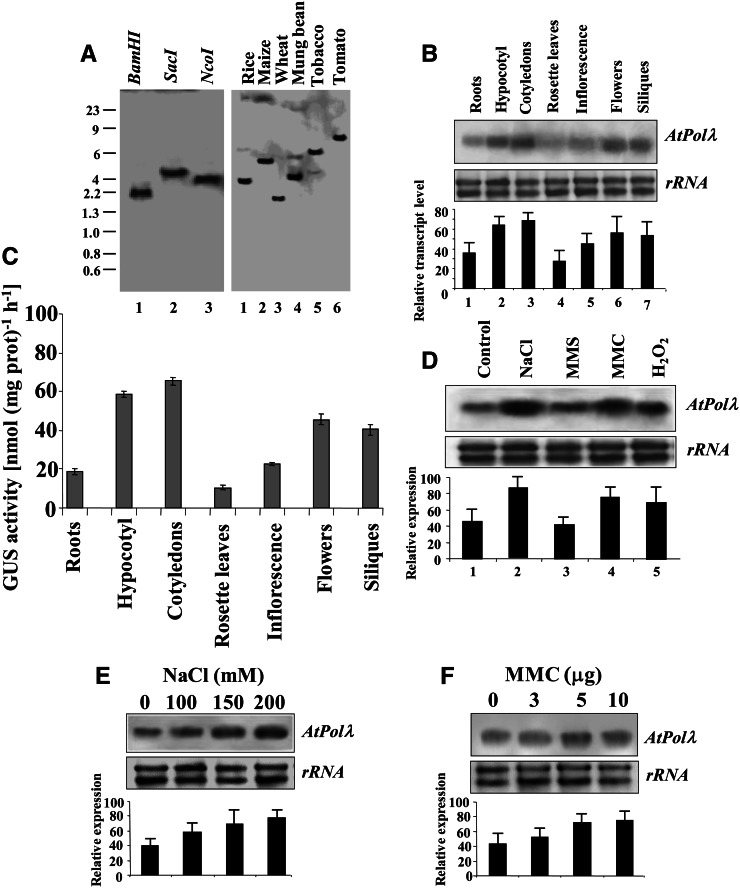Figure 1.
Conservation of the DNA Pol λ gene in plant genomes. A, Genomic hybridization analysis of the Pol λ gene using genomic DNA samples from Arabidopsis (left panel) and various other plant species (right panel). DNA size markers (in kb) are indicated on the left. B, The accumulation pattern of the AtPolλ transcript in different tissues of Arabidopsis was analyzed by RNA gel blotting using 20 μg of total RNA (top panel). Ethidium bromide-stained ribosomal RNA (rRNA) is shown as a loading control (middle panel). Quantification of the data by densitometry (Bio-Rad Image Densitometer G700) is shown in the bottom panel. Data points represent mean values from three independent trials. C, Measurement of GUS activity in various tissues of transgenic Arabidopsis plants carrying the AtPolλ promoter-GUS transgene. Bars represent mean values from three independent observations. D, DNA damage regulated the expression of AtPolλ. RNA gel-blot analysis shows total RNA (20 μg) from 7-d-old wild-type Arabidopsis seedlings exposed to high salinity (200 mm NaCl) and various other genotoxic agents (80 µL L−1 MMS, 5 μg mL−1 MMC, and 20 mm H2O2; top panel). Ethidium bromide-stained rRNA is shown as a loading control (middle panel). Quantification of the data is shown in the bottom panel. Data points represent mean values from three independent trials. E and F, RNA gel-blot analysis using total RNA (20 μg) from 7-d-old wild-type Arabidopsis seedlings exposed to increasing concentrations of NaCl (E) or MMC (F) for 8 h (top panels). Ethidium bromide-stained rRNA is shown as a loading control in each case (middle panels). Quantification of the data is shown in the bottom panels. Data points represent mean values from three independent trials. Representative gel images from at least three independent trials are shown for A, B, D, E, and F. A 1.59-kb AtPolλ cDNA fragment was used as a probe in DNA and RNA gel blotting.

